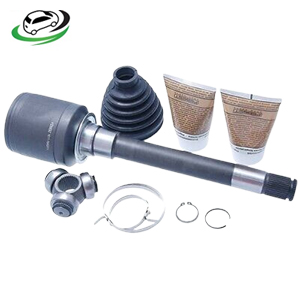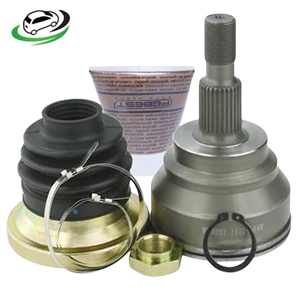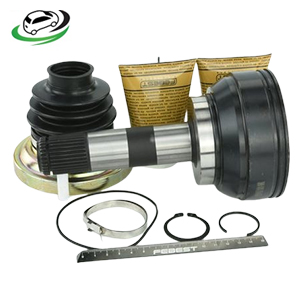-19%
Get Rear Inner CV Joint 34X79.9X32 Mercedes Benz ML 280 CDI 4Matic / ML 300 CDI 4Matic 164.# 1611-164R
The inner Constant Velocity (CV) joint is a crucial component in front-wheel-drive and all-wheel-drive vehicles, playing a vital role in transmitting power from the transmission to the wheels while allowing for smooth and flexible movement of the drive shafts. This comprehensive guide explores the structure, function, types, importance, and maintenance of inner CV joints.
Structure of an Inner CV Joint
An inner CV joint typically consists of the following main components:
- Housing: The outer casing or housing of the inner CV joint, usually made of durable metal, encases the internal components and provides structural integrity.
- Bearings: The inner CV joint contains several ball bearings or needle bearings that facilitate smooth movement and reduce friction between the moving parts.
- Race: The race is a grooved component inside the CV joint housing that holds the bearings in place and allows them to move within the grooves, accommodating various angles of the drive shaft.
- Drive Shaft: The drive shaft, also known as the axle shaft, connects to the inner CV joint and transmits power from the transmission to the wheels.
- Boot: The CV joint boot is a flexible rubber or silicone cover that encases the joint, protecting it from dirt, moisture, and debris while retaining the lubricant inside.
- Grease: High-performance grease is used inside the CV joint to ensure smooth operation, reduce friction, and protect against wear and corrosion.
Function of an Inner CV Joint
The primary function of an inner CV joint is to transmit power from the transmission to the wheels while allowing for flexible movement of the drive shaft:
- Power Transmission: The inner CV joint transmits rotational power from the transmission to the drive shaft, which then transfers the power to the wheels, enabling vehicle movement.
- Flexibility: The inner CV joint accommodates changes in angle and length of the drive shaft as the vehicle’s suspension moves up and down. This flexibility allows for smooth power delivery even when the wheels are turning or the suspension is compressed or extended.
- Reducing Vibration: By allowing for smooth and consistent power transmission, the inner CV joint helps reduce vibrations and shocks transmitted to the vehicle’s drivetrain, enhancing ride comfort and stability.
Types of Inner CV Joints
There are several types of inner CV joints, each designed for specific applications and vehicle configurations:
- Tripod Joint: Also known as a tripod CV joint, this type features three roller bearings mounted on a trunnion that moves within the joint housing. It is commonly used in front-wheel-drive vehicles.
- Double Offset Joint: This type of inner CV joint uses two sets of ball bearings to accommodate greater angular movement and axial displacement. It is often found in high-performance and heavy-duty vehicles.
- Plunging CV Joint: The plunging CV joint allows for significant axial movement, accommodating changes in the drive shaft length. It is used in vehicles with significant suspension travel or articulation.
Importance of Inner CV Joints
Inner CV joints are essential for several reasons:
- Smooth Power Delivery: They ensure consistent and smooth power transmission from the transmission to the wheels, providing a stable and responsive driving experience.
- Vehicle Stability: Properly functioning inner CV joints contribute to vehicle stability by accommodating changes in suspension movement and maintaining consistent power delivery.
- Reduced Wear and Tear: By allowing for flexible movement and reducing vibrations, inner CV joints help minimize wear and tear on the drivetrain components, extending their lifespan.
- Improved Handling: Inner CV joints enhance vehicle handling by allowing the wheels to move independently while maintaining power transmission, ensuring better control and maneuverability.
Maintenance of Inner CV Joints
Proper maintenance of inner CV joints is crucial to ensure their longevity and optimal performance:
- Regular Inspection: Periodically inspect the CV joint boots for signs of wear, cracks, or leaks. Damaged boots can allow dirt and moisture to enter the joint, leading to premature wear.
- Greasing: Ensure the CV joint is adequately lubricated with high-quality grease. Lubrication helps reduce friction and wear, ensuring smooth operation.
- Boot Replacement: If the CV joint boot is damaged, replace it promptly to prevent contaminants from entering the joint and causing damage.
- Professional Service: If you notice symptoms such as clicking noises, vibrations, or difficulty steering, have the CV joints inspected by a professional mechanic. Early detection and repair can prevent further damage and costly repairs.
Follow us on Facebook for more parts.





